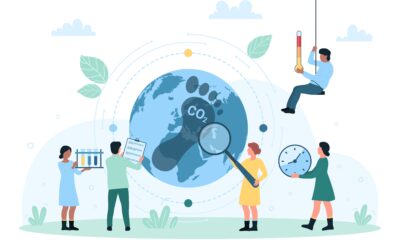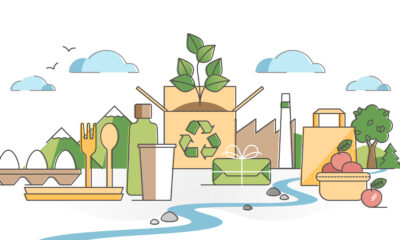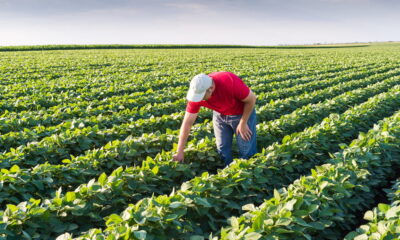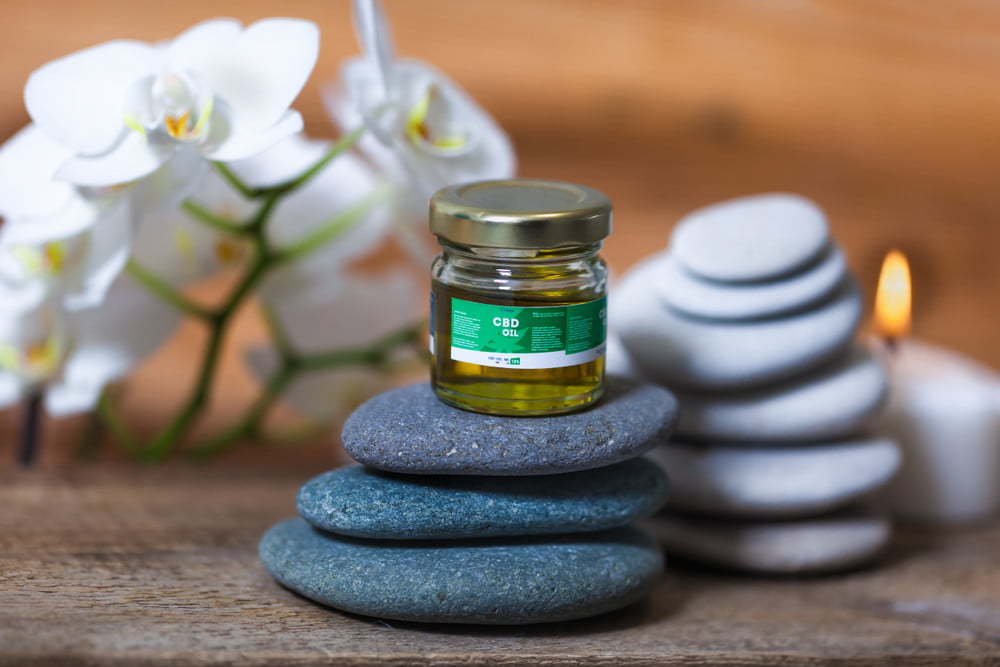
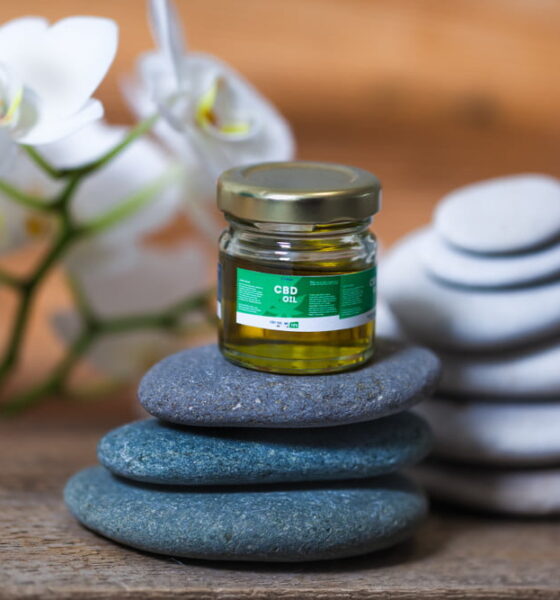
Environment
Demystifying The Net Environmental Impact Of CBD
The market for CBD is growing tremendously. The legal market for marijuana is expected to reach $66.3 billion within the next five years. As the market for cannabis grows, more people are starting to wonder whether it will have a positive or negative effect on the environment.
Is CBD a Boon or a Bane for the Environment?
So far, 33 states have legalized cannabis in some form. Another 11 states have also legalized recreational marijuana.
There are a number of arguments in favor of legalizing cannabis. In 2011, Scientific America published an article citing the environmental benefits of doing so. Some people remain skeptical, though.
CBD Has Varied Impact on the Planet
The agriculture industry is essential for everyday living. Without the high volume of farms and ranches around the globe, the world would run out of food in a matter of days. But this essential piece of our lifestyle is also a huge contributor to global emissions and climate change. There have been many changes to legislation and farming practices to try to keep this in check, but as the number of agricultural institutions increase, it’s harder and harder to minimize emissions. Some experts have estimated that agriculture accounts for around 9% of our carbon footprint, but the real figure is probably a lot higher.
Hemp, a variety of the cannabis plant, is a growing addition to the agriculture market. Now that CBD, a derivative of the hemp plant, is becoming more widely accepted around the world, new hemp farms are cropping (pun intended) up all over the nation. How has the increased acreage of hemp impacted the environmental impact of agriculture?
Actually, hemp is one of the eco-friendliest plants grown today. It’s not emission free, but compared to many non-organic farming practices, it gets an A+.
How Hemp Should Be Grown
When you buy CBD capsules online, you probably wonder how the CBD you’ll be ingesting got into the capsule. It starts with a hemp plant.
An industrial hemp farmer knows the value of growing pure, organic crops. That’s where the money is for this cash crop, so most farmers carefully abide by this style of farming which comes with significantly reduced emissions.
First of all, hemp is fully organic without the use of pesticides, chemical fertilizers, and other toxins that infect the soil, contaminate water sources, and pollute the air. Hemp does require more water than many plants, but it’s usually grown in climates where getting 20-30 inches of rainfall during its growth cycle usually doesn’t require much extra irrigation.
The harvesting process is similar to other farming processes, so it usually involves heavy machinery with diesel emissions. However, many farmers are looking into more eco-friendly ways to harvest and limit their emissions.
How CBD Is Extracted
The extraction process is also eco-friendly by today’s standards of agriculture. Most quality CBD manufacturers use the most environmentally friendly extraction process around: supercritical CO2 extraction. It’s a CO2 extraction using just distilled water and sound waves. No heat is necessary, minimizing electricity or gas needs.
The carbon dioxide acts as a solvent, so no chemical-heavy exterior solvents are necessary. To ensure that the CBD extracted from hemp is pure and clean, this pressurized system of extraction is essential for a quality product.
Industry Regulations
It’s true that the government has largely stayed out of the CBD industry to avoid political conflicts. However, it has poked its nose into the growth of industrial hemp, and the USDA has approved select farms.
Their stamp of approval indicates that the respective farms are abiding by the USDA Hemp Production Program, which provides rules and restrictions for growing and harvesting hemp in safe, eco-friendly practices.
The National Institute of Food and Agriculture (NIFA) also performs external research on industrial hemp growth to try to bring more hemp farms into the fold of eco-friendly, totally organic hemp practices.
Areas of Improvement
There are very few products out there that leave a 100 percent zero-emission footprint, and hemp is no different. Now that CBD has become a nationwide product, it has become imperative to ship CBD all over the country to keep the industry alive and well. This means there are heavy emissions associated with transportation, one of the largest contributors to greenhouse gases and climate change.
Manufacturers of CBD products are always looking for ways to reduce these emissions. They’re seeking to source their products from nearby to reduce transportation from farm to warehouse.
However, the real eco-friendly impact would come from changing legislation that makes in-store CBD legal throughout the nation. This won’t erase online sales and shipping needs completely, but it will reduce the costs.
How to Identify Eco-Friendly CBD
Now, just because the best strains of CBD are made from environmentally friendly farming practices doesn’t mean that all CBD manufacturers follow those guidelines. There are more than a few hemp farms that don’t care about following organic practices. They cut corners and both the environment and the quality of CBD they produce suffer immensely.
Now, just because the best strains of CBD oil are made from environmentally friendly farming practices doesn’t mean that all CBD manufacturers follow those guidelines. There are more than a few hemp farms that don’t care about following organic practices. They cut corners and both the environment and the quality of CBD they produce suffer immensely.
As a responsible CBD user, you want to get your CBD from the best sources of hemp. It will not only be more potent, but it will also leave a much smaller carbon footprint. Here are a few key practices for identifying eco-friendly CBD strains.
- Check the Price: CBD is expensive. Quality CBD costs an average of $0.20 per mg, although there are a few high-quality strains that come in a little cheaper. If you’re looking at CBD at a price of $0.05-$0.09 per mg, that’s probably a pretty good indicator that it’s not pure, organic CBD. If you want an eco-friendly, pure product, you have to pay the price.
- Look for Recognized Hemp Farms: There are a few exceptions to this rule, but most organic CBD is produced from a cooperative of recognized hemp farms. For example, the Colorado Department of Agriculture has an Industrial Hemp Program that regulates organic industrial hemp cultivation. If your hemp comes from a farm in this coalition, it’s more than likely organically produced.
- Read Third-Party Lab Tests: The most telling piece of evidence for organic hemp cultivation is the third-party lab testing. It should show that it’s completely free of pesticides, metals, and other contaminants commonly used in less eco-friendly practices. It will also show that the ingredients are pure and clean, giving you peace of mind that you’re going to be consuming what you think you are.
As a consumer who’s concerned about buying eco-friendly products, CBD fits the bill. Be sure to do your research to get the best possible CBD that uses only the best organic practices.
CBD is Probably Good for the Planet
There are a lot of nuances when talking about climate change. However, there is a good amount of evidence to suggest that expanding the CBD market will be good for the environment.


 Environment10 months ago
Environment10 months agoAre Polymer Banknotes: an Eco-Friendly Trend or a Groundswell?

 Environment12 months ago
Environment12 months agoEco-Friendly Home Improvements: Top 7 Upgrades for 2025

 Features9 months ago
Features9 months agoEco-Friendly Cryptocurrencies: Sustainable Investment Choices

 Features10 months ago
Features10 months agoEco-Friendly Crypto Traders Must Find the Right Exchange
